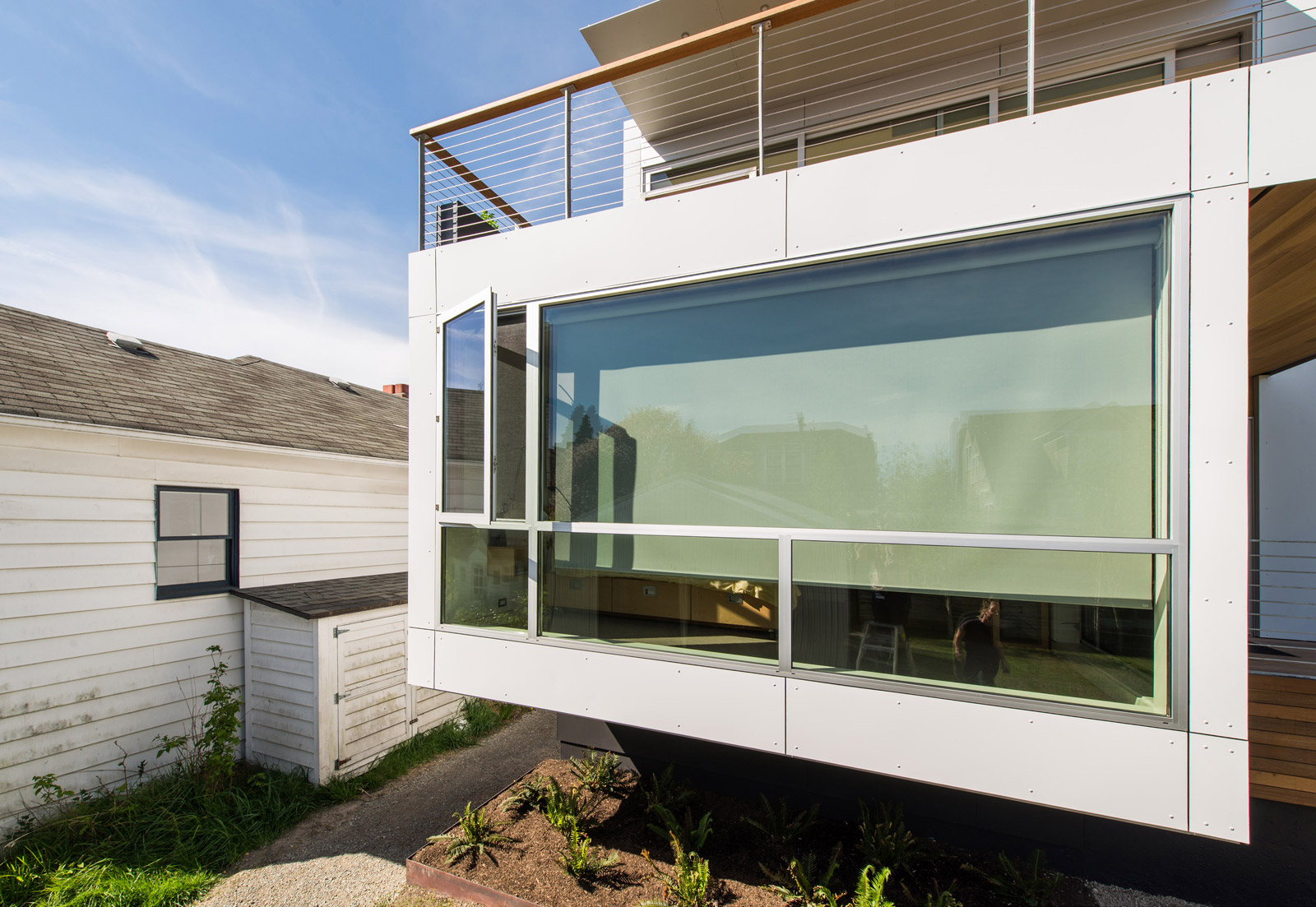
[All images by BUILD LLC]
If there is one consistency among modern architecture, it’s an abundance of nice, generous windows. Nothing says inspiring, healthy living to us like ample daylight, fresh air, and the occasional view. Designing the correct windows into the appropriate locations of a house or building requires a familiarity with current products, a good relationship with window suppliers, technical know-how, and, most importantly, clear communication between the architect and client. Key to bringing all of these factors together cohesively is an understanding of window terminology, and today’s post covers the basics. BUILD recently completed the Case Study House 2014, which provides some excellent built examples of window applications.
GEOMETRY & PARTS
Windows applied to modern architecture tend to be larger, which directly results in window compositions that require a larger frame containing a number of separate glass panes. These panes can be a combination of both fixed and operable windows, and the diagram below illustrates the basic parts of this composition.
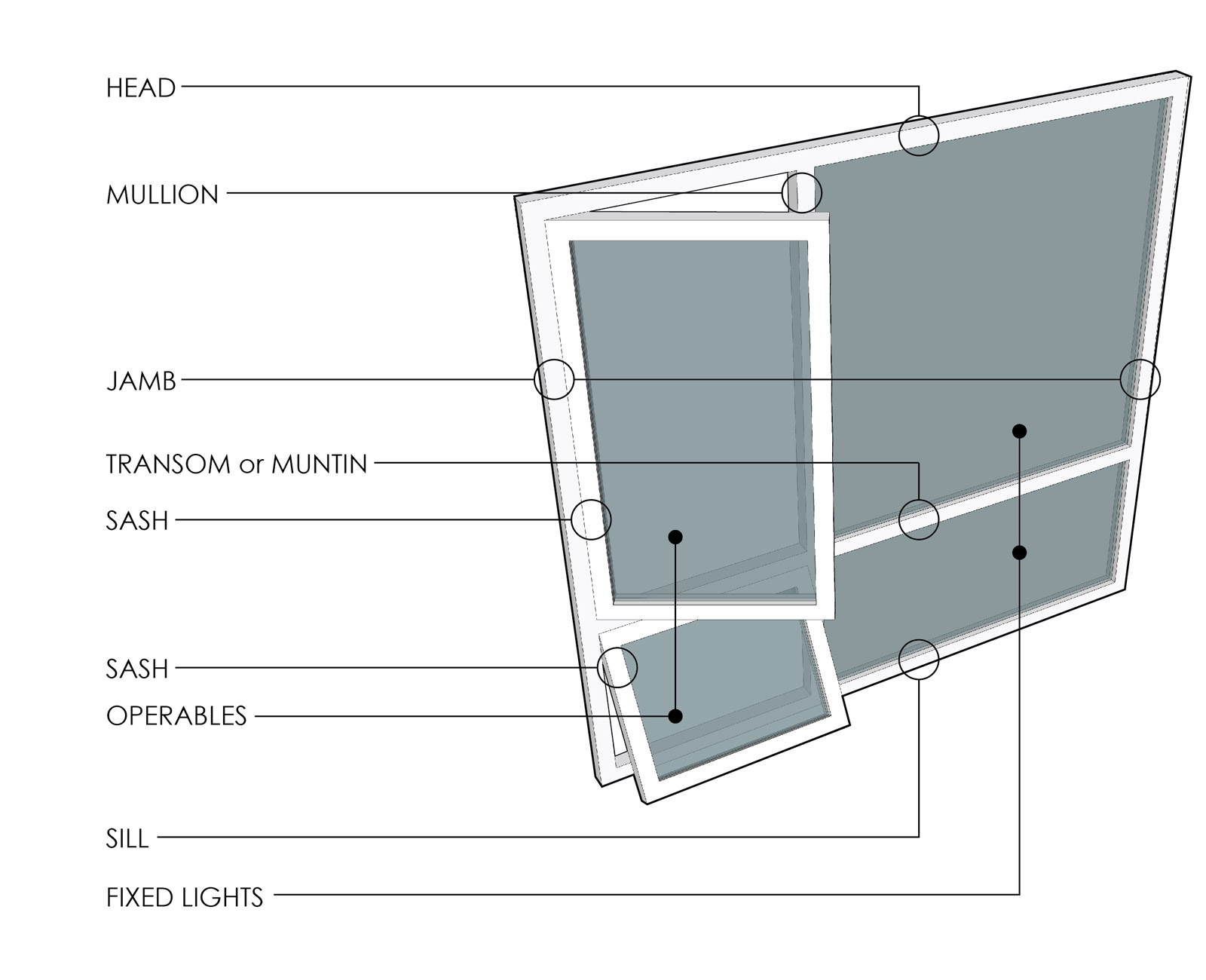
The CSH2014 example below uses Marlin clear anodized aluminum with three fixed lights below the transom, and a large fixed light and operable above. A custom window composition like this can be manufactured in a variety of different sizes and configurations.

Larger window compositions may require deeper mullions for increased lateral strength of the window assembly as indicated in the photo below. Here a thickened mullion gives additional support to window panes on each side. This mullion is notched at the interior sill condition.
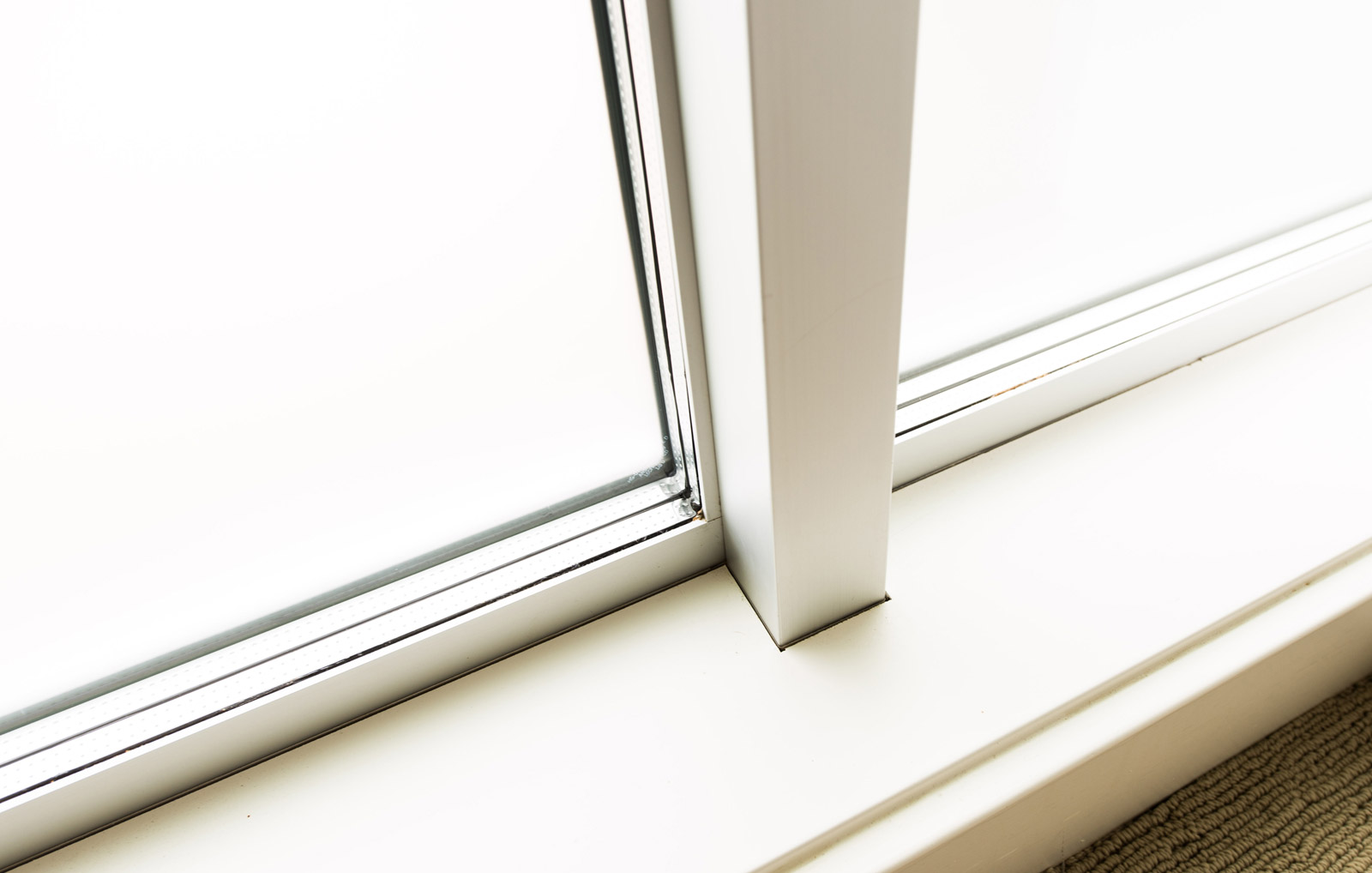
TYPES & DRAWING CONVENTIONS
Driven by a philosophy of modernism here at BUILD, we find that three simple window types accommodate most situations very successfully.
Picture windows are the most common type and accommodate fixed window panes that eliminate the sash and optimize daylight and view. Casement windows are an excellent fit for operable windows above the transom (or with sills set higher off the finished floor). They offer good ventilation without compromising much daylight or view. Awning windows are what we favor for operables located close to the floor and ceiling. They provide great venting, and if accidentally left open during rain, the configuration shields the interior from water (excluding, of course, the sometimes gravity-defying rain we see here in the Northwest).
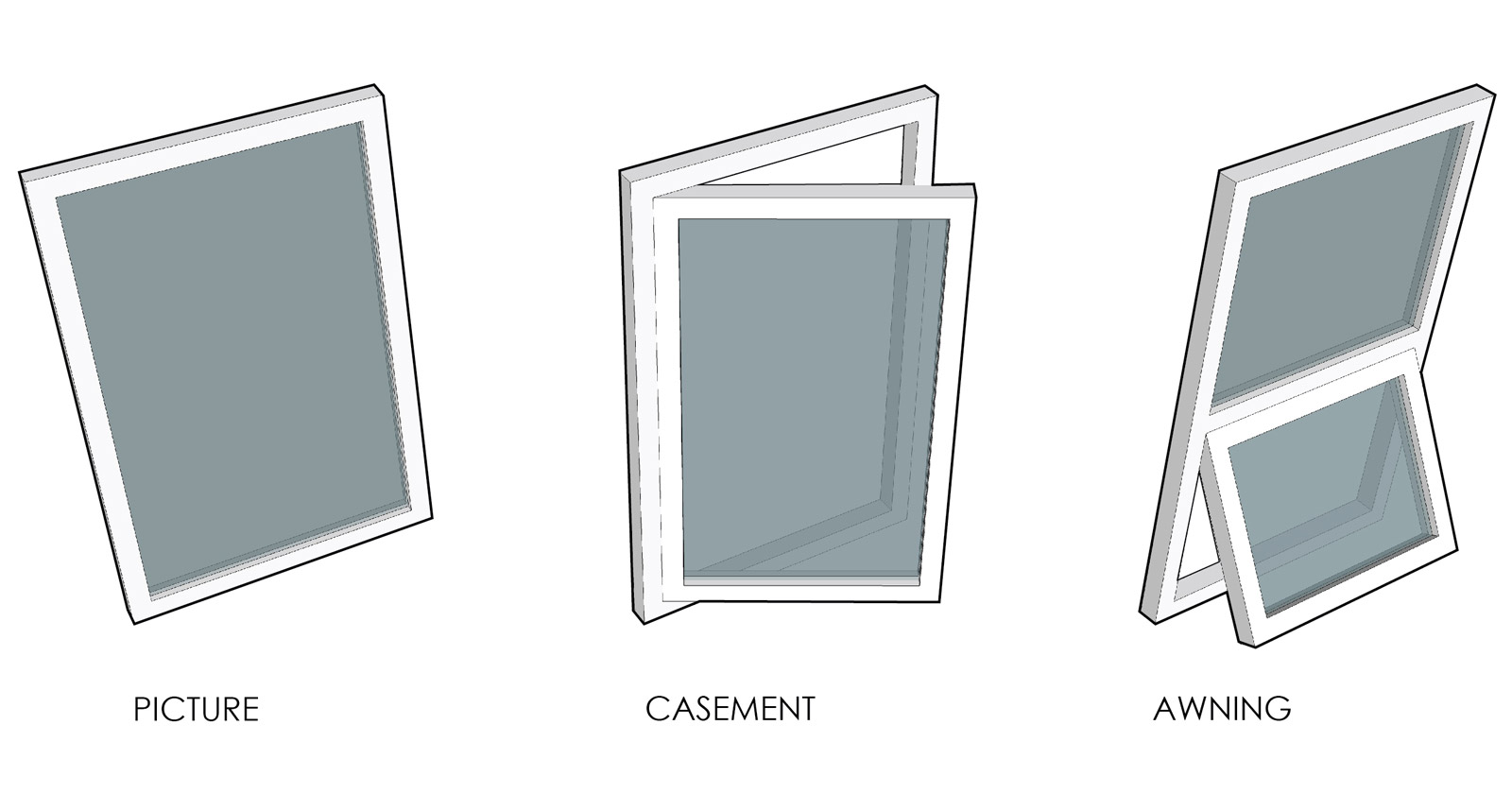
Because construction drawings and shop drawings are two-dimensional, additional graphics will accompany operable windows on an architectural set. A common convention is the dashed line shown on the operable panels below. The point made by the dashed line indicates the hinged side of the operable window.

There are many additional types of operable windows, and we’ve highlighted a few below.
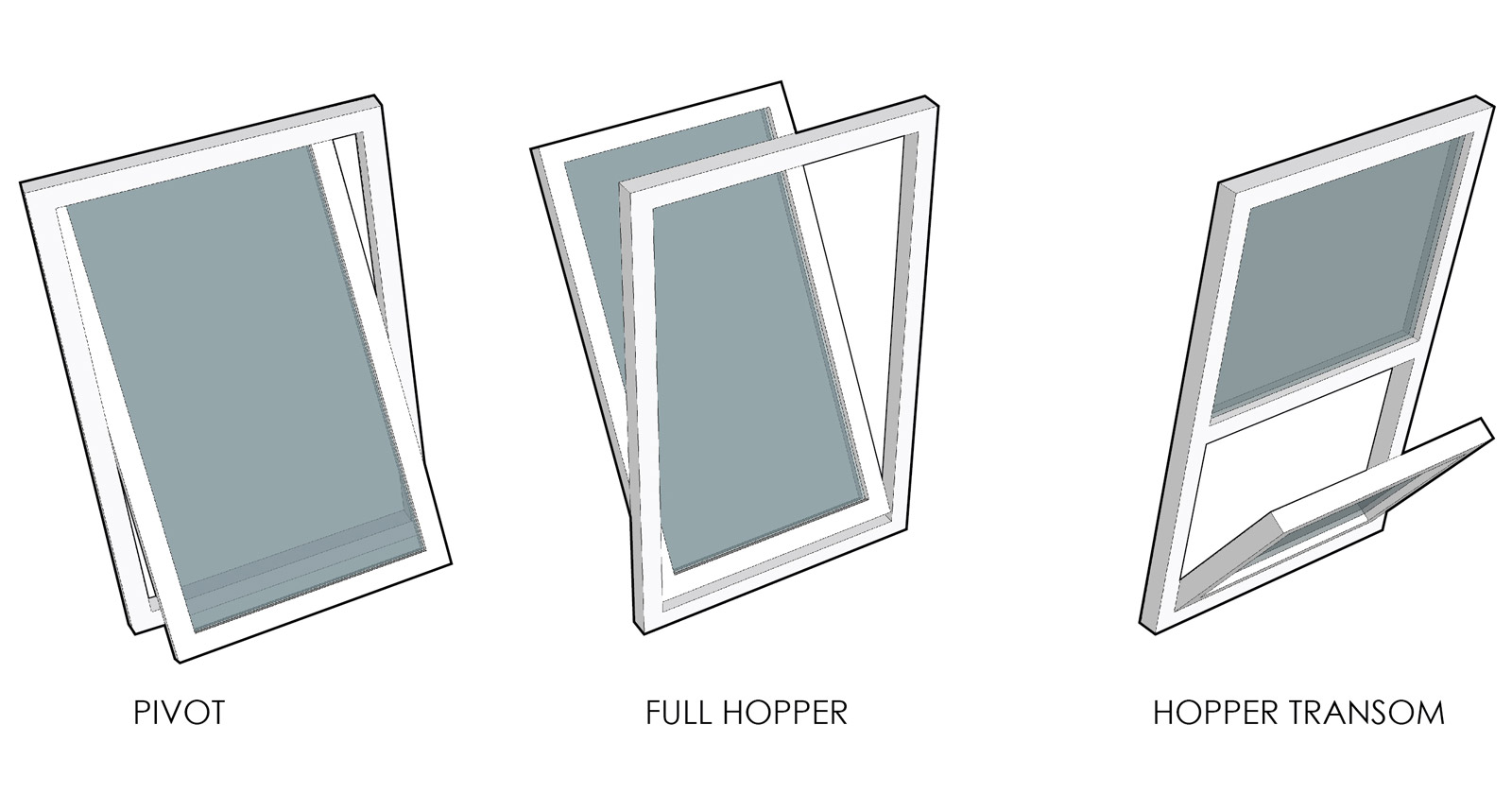

ALUMINUM VS. OTHER MATERIALS
Some of the requisite qualities of good modern architecture involve attenuated materials, energy-efficiency, smooth function, low maintenance, and a cost-effective application. For these reasons we prefer aluminum windows on BUILD projects. Keep in mind, these are not the single-pane aluminum windows of the 1970’s. Modern aluminum windows are double and triple-pane with thermal breaks for energy efficiency. The mechanics on newer windows allow for smooth operation, and the anodized finish complements the clean aesthetics of modern design.

That said, there are several window materials out there, and we’ve listed a handful below with our thoughts on each.
Wood
Roughly twice the cost of aluminum and (much) higher maintenance. On the plus side, they’re very energy-efficient and visually warm.
Steel
Very attenuated and beautiful, but extremely expensive and very energy-inefficient.
Vinyl
Excellent energy-efficiency, but tends to look and feel like plastic (because it is).
Fiberglass
Excellent energy-efficiency, cost-effective, and looks and feels better than vinyl. (We’re warming to them.)
Composite
A combination of materials to achieve one result outside and another inside. Offers the benefit of wood windows inside, but avoids the maintenance involved with exterior wood windows.
SCREENS & HARDWARE
Operable windows are typically supplied with screens to keep the bugs out and whether you’re a fan of screens or not, it’s good to at least keep the screens in storage (they can be a pain to order later). With a modern window package, screens tend to be minimal and blend in nicely with the window frames. Screw-in tabs at each corner hold the screens tightly to the frames as shown in the photo below.
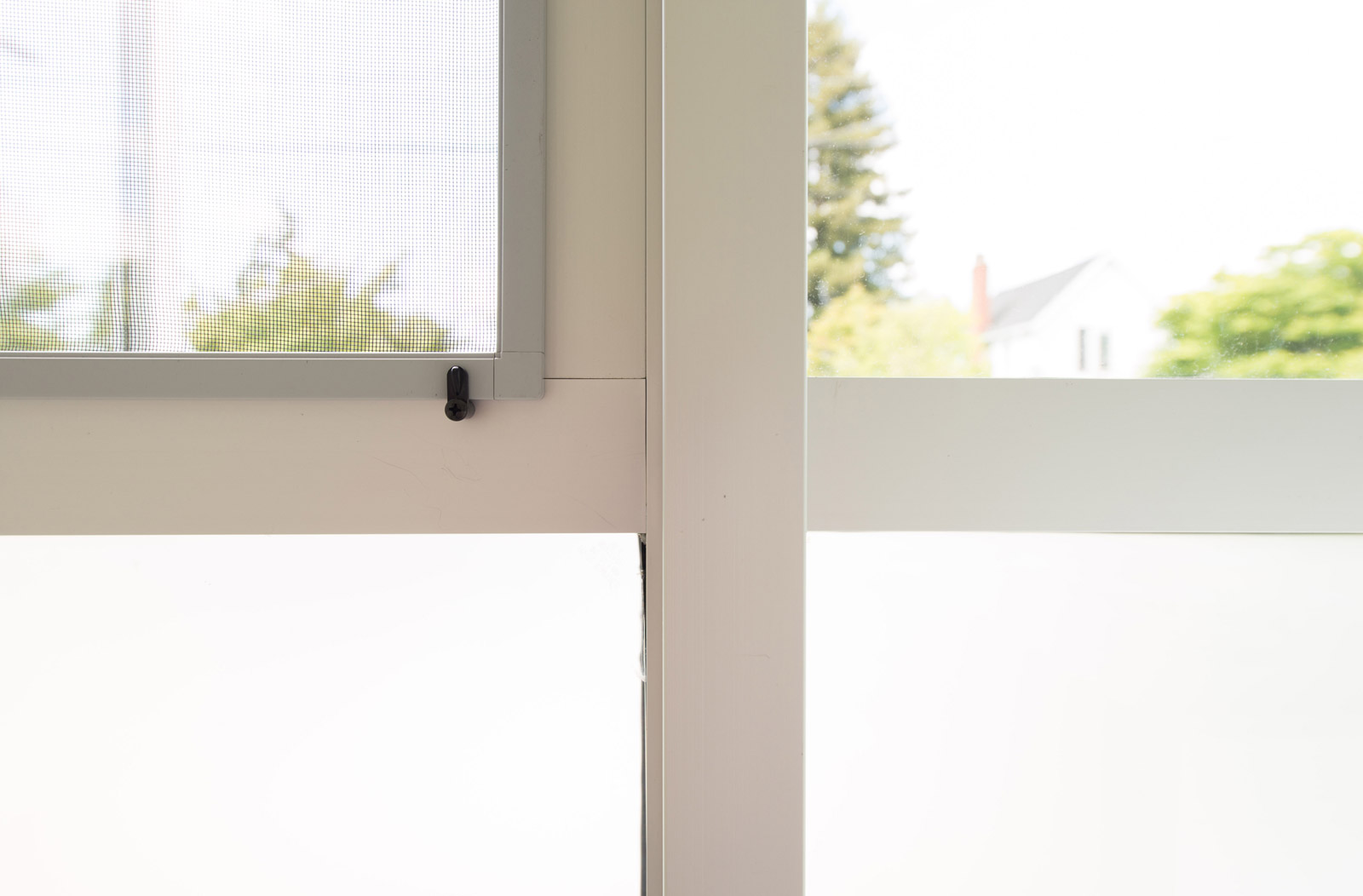
While there is a seemingly infinite amount of window hardware on the market, there are two primary options to consider for operable aluminum windows. The roto-style hardware shown below has one primary advantage in that it keeps the window screen minimal. Because this handle mechanically pushes the operable window pane out, there is no reason to grasp the operable window itself, which eliminates the awkward “latch hatch” at the screen to access the window hardware. This feature doesn’t quite fit in the modernism vocabulary.
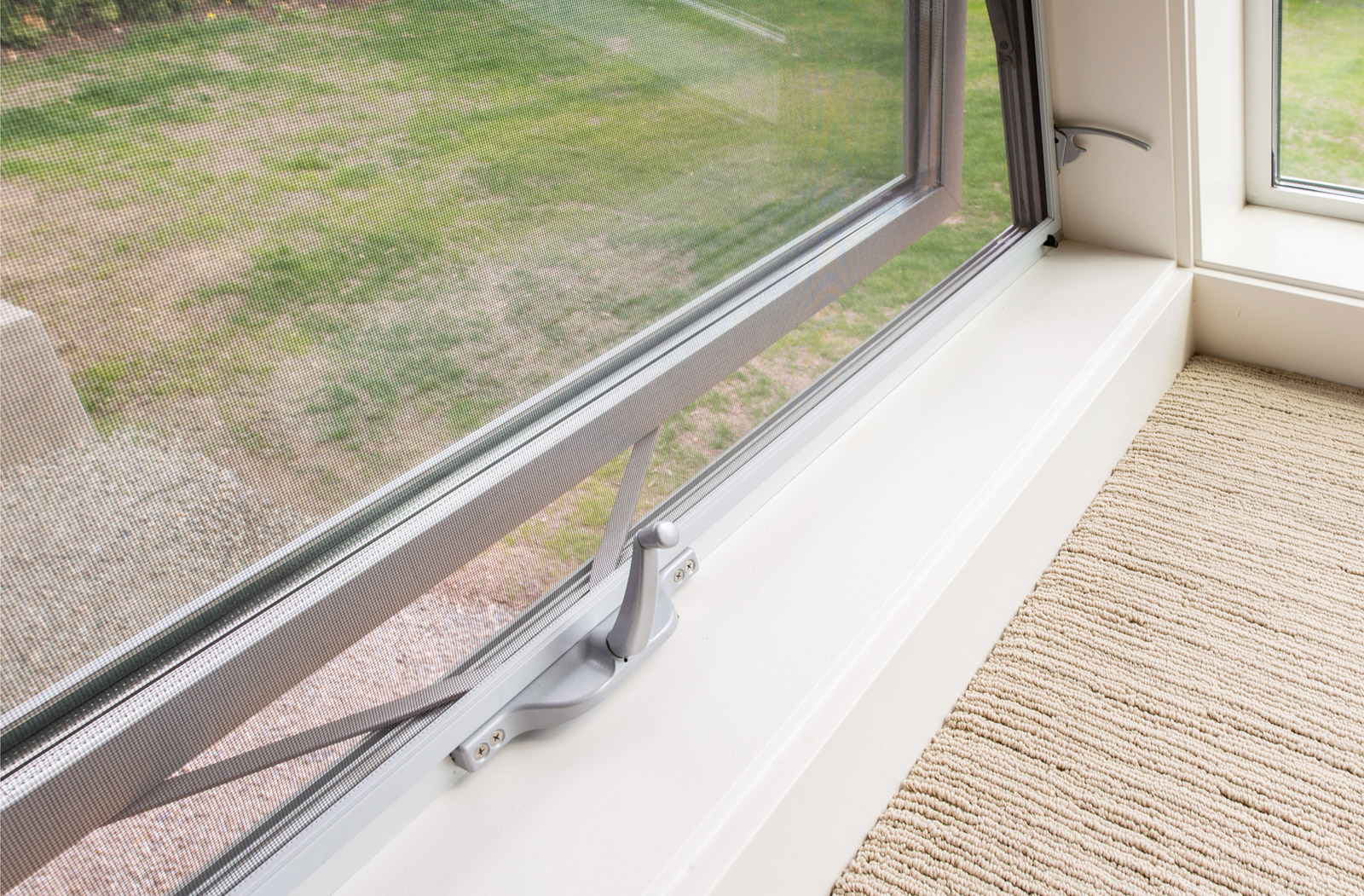
Another advantage with roto-style handles is the windows are locked tight to the frame, typically with a lever on each side of the jamb.

An alternative hardware option, when screens or roto-style hardware are not desired, is the lever-latch shown below. These levers are minimal in appearance and highly functional.
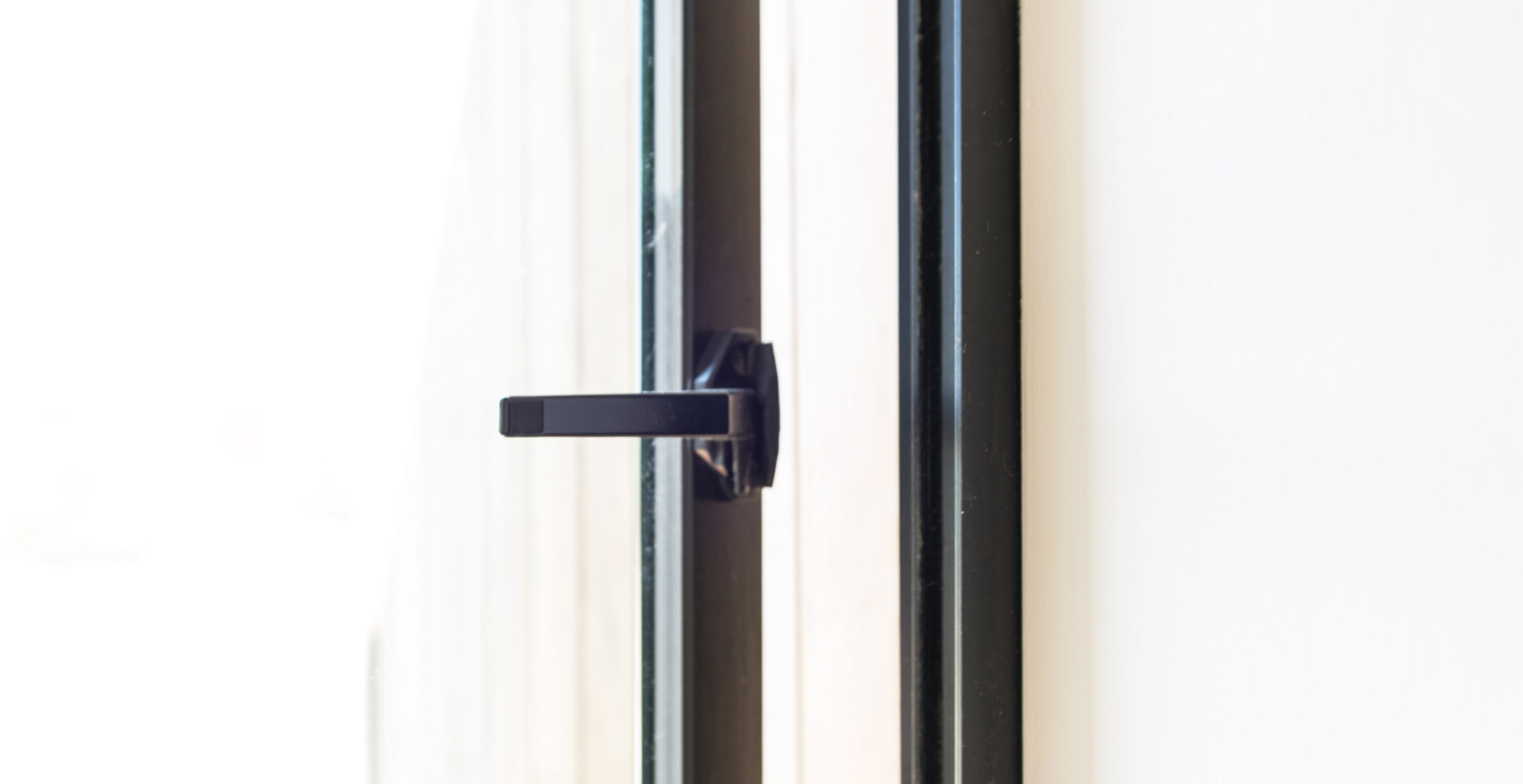
GLAZING THICKNESS & TRANSPARENCY
As mentioned in the materials section above, single-pane windows are a thing of the past. Modern window packages are double-pane at a minimum, and the air gap between the glass panels is typically filled with argon (or a similar gas) for increased performance. While increased energy-efficiency is important, there are a couple of important drawbacks to multiple panes of glass. With three or more panes, the weight increases significantly and a green/blue tint becomes noticeable in the glass. To meet or beat the energy code, we’ll often specify triple pane glazing below the transom, where the panels are smaller and the tint is less noticeable, and double pane where the glazing occurs at eye-level.
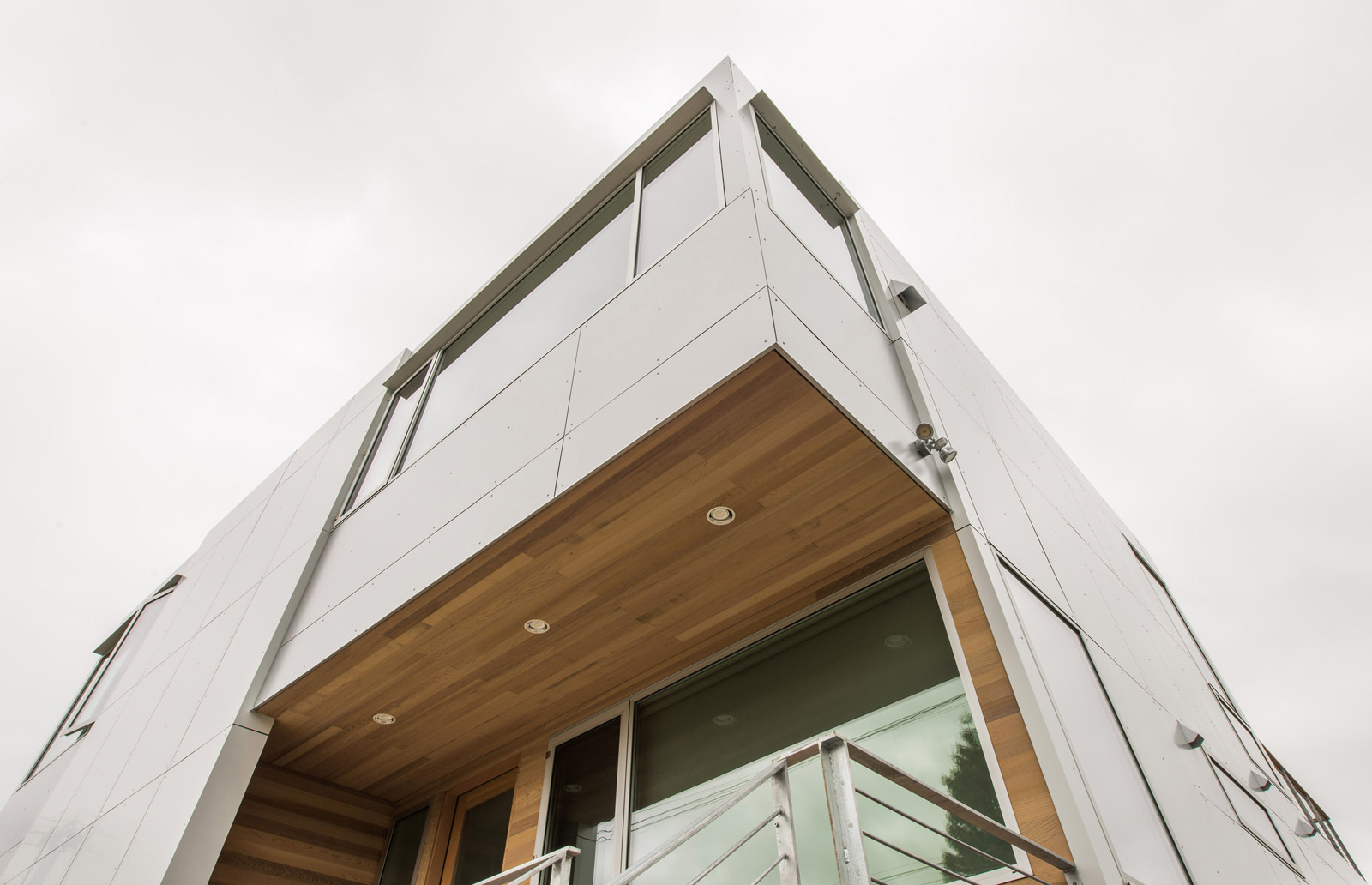
Etch-matte glazing is an important option to consider in the modern window package, as it allows light through the window, but blurs a clear view. This can be a useful strategy in areas like bedrooms, where natural light is important but privacy is desired. The example above uses clear glazing above the transom and etch-matte glazing below to help conceal a desk and offer additional privacy at a bedroom
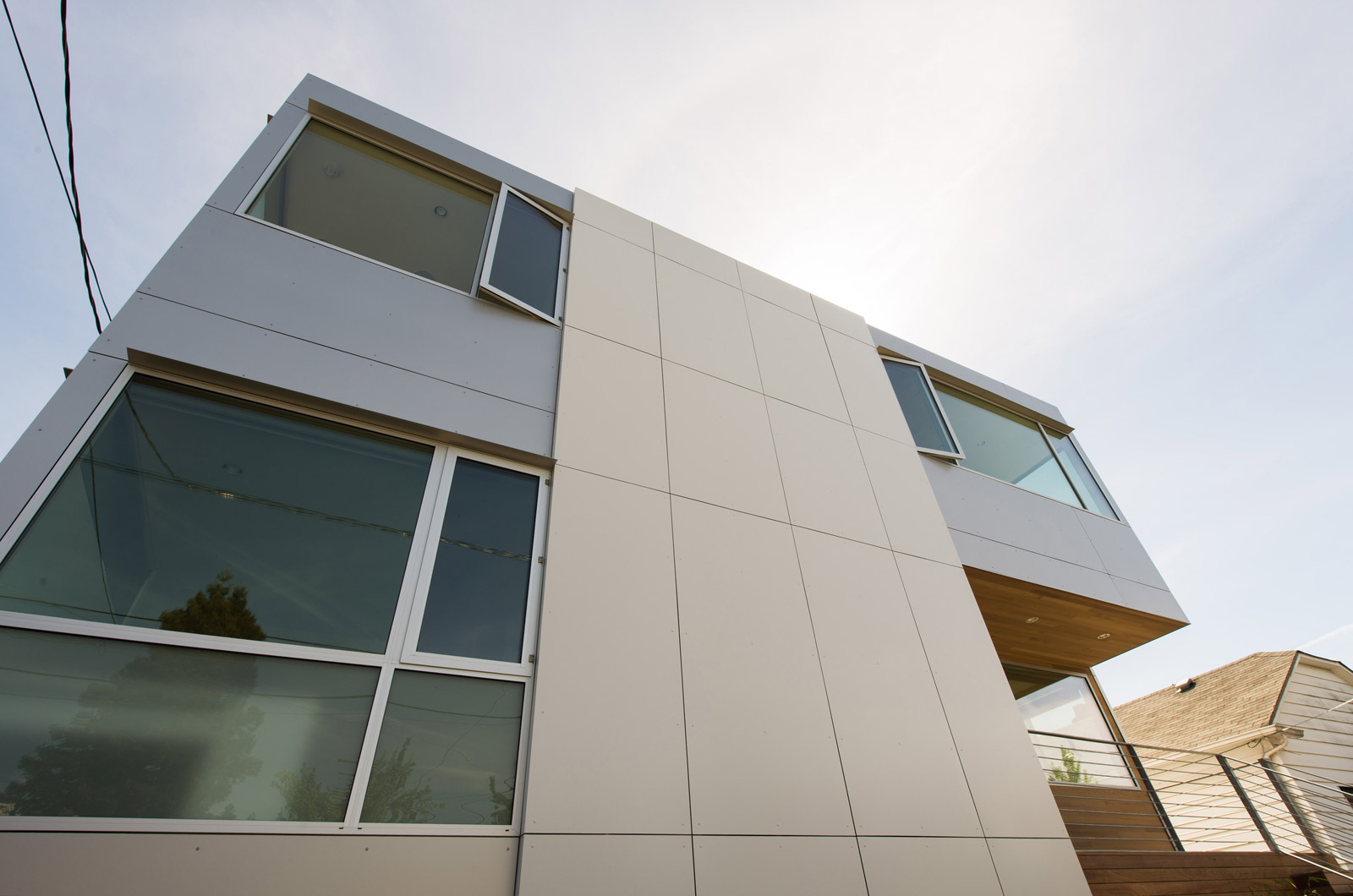
Armed with the information above, you’re in good shape to discuss the window package on a modern home. There are many more terms and techniques pertaining to window packages, so feel free to add yours to the comments below.
Cheers from Team BUILD





